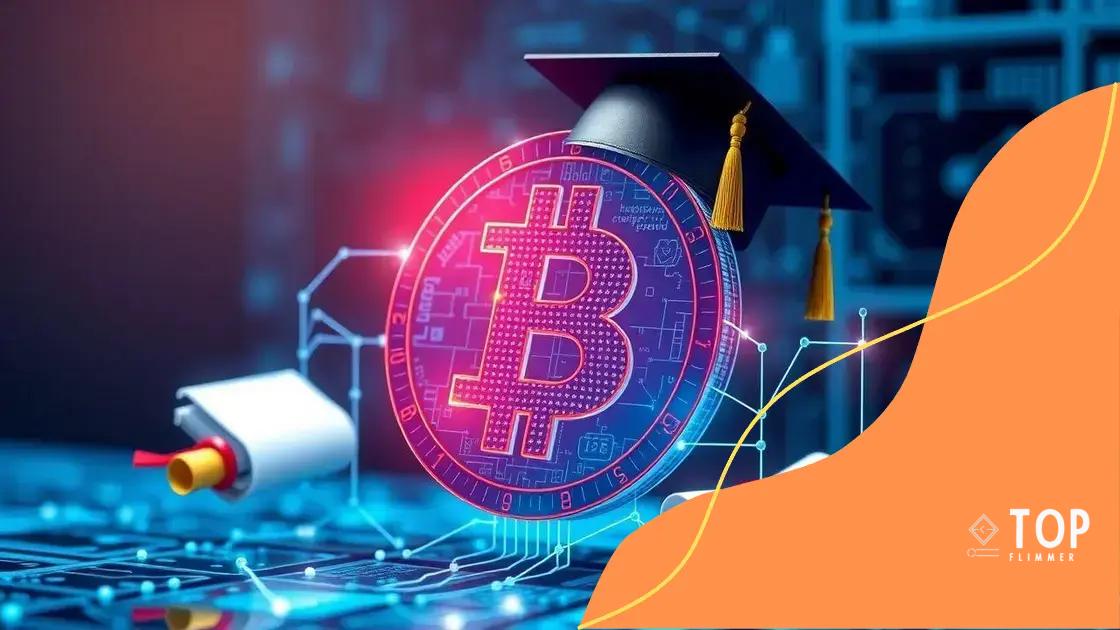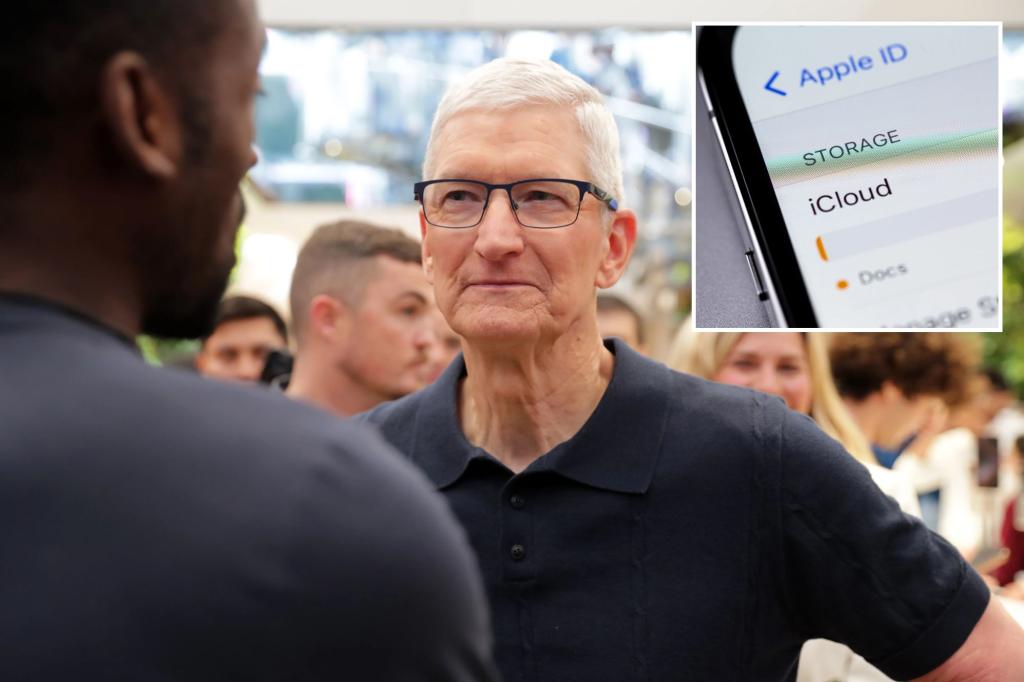Blockchain credentials: securing academic records

Blockchain credentials offer secure, verifiable storage of academic records, enhancing transparency and efficiency in education while enabling personalized learning paths and smart contract automation for faster verification.
Blockchain credentials are changing the landscape of academic records, promising a secure and tamper-proof way to validate educational achievements. Have you ever wondered how this technology works and its potential impact on your educational journey? Let’s delve deeper.
Understanding blockchain technology
Understanding blockchain technology is essential in today’s digital world. It forms the backbone of many innovations, especially in finance and record-keeping. This technology is not just a passing trend; it’s shaping how we interact with data.
At its core, blockchain is a decentralized digital ledger. This means that information is stored across a network of computers, making it secure and transparent. Instead of relying on a single entity to manage data, multiple parties verify changes, ensuring integrity and trust.
Key Features of Blockchain
There are several key features that make blockchain unique:
- Decentralization: No single point of control.
- Transparency: Changes are visible to all participants.
- Security: Cryptographic principles protect data.
- Immutability: Once data is recorded, it cannot be altered.
This decentralization is crucial for many applications, such as cryptocurrencies like Bitcoin. With blockchain, users can send and receive funds without the need for banks. Each transaction is securely recorded in a block and linked to the previous one, forming a chain.
Another aspect to consider is how blockchain enhances trust. Since everyone in the network has access to the ledger, the chances of fraud decrease significantly. Imagine a system where students’ academic records are stored on a blockchain. This would eliminate the need for third-party verification, streamlining the process greatly.
Real-World Applications
The applications of blockchain technology go beyond finance. In supply chain management, it provides a way to trace the origin of products, ensuring quality and ethics in sourcing. In healthcare, patient records can be secured and shared seamlessly among authorized personnel.
As we move forward, understanding blockchain technology will prepare us for the future. This remarkable tool has the potential to revolutionize various sectors by providing reliable, efficient, and transparent processes.
Benefits of blockchain for academic records
The benefits of blockchain for academic records are becoming clear as educational institutions explore this innovative technology. By utilizing blockchain, schools and universities can ensure that academic credentials are secure, transparent, and easily accessible. This technology promises to change how we verify educational achievements.
One significant advantage is the security it provides. With blockchain, records are stored in a decentralized manner, which means they are less prone to tampering or unauthorized access. Each entry is cryptographically secured, making it extremely difficult for anyone to alter the information.
Increased Trust and Transparency
Another important benefit of blockchain is the transparency it offers. When academic records are stored on a blockchain, all stakeholders—including students, educators, and potential employers—can view the same unaltered data. This mutual access builds trust between parties.
- Students can prove their qualifications without needing a third party.
- Employers can easily verify the credentials of applicants.
- Institutions can ensure that records are authentic and reliable.
Moreover, using blockchain can expedite the verification process. Traditionally, verifying academic credentials can take time due to bureaucracy. With blockchain, verification is nearly instant. This efficiency is beneficial for students applying for jobs or further studies.
The support for education innovation is also noteworthy. Implementing blockchain in academic settings encourages institutions to adapt to modern technologies, enhancing their overall effectiveness and reputation. Students benefit from a streamlined process that makes their educational journey smoother.
Cost-Effectiveness
Cost savings are another factor to consider. By reducing the reliance on paper documents and enabling a more efficient verification process, educational institutions can save money on administrative costs. This can lead to more funds being available for student services and institutional improvements.
Ultimately, the integration of blockchain into academic records heralds a new era of education. Students and institutions alike stand to gain significantly from this advancement, making education more accessible and trustworthy than ever before.
Implementation of blockchain in education

The implementation of blockchain in education is gaining momentum as institutions recognize its potential. This technology can transform how academic records are created, verified, and shared. By integrating blockchain, educational institutions can enhance the security and reliability of student records.
Initially, schools and universities must assess their current systems. Understanding existing processes is crucial for successful integration. This assessment can help institutions identify opportunities for improvement and the best strategies for using blockchain effectively.
Steps for Implementation
Here are some important steps educational institutions can take:
- Identify goals: Determine what the institution aims to achieve with blockchain.
- Choose the right blockchain: Different blockchains have various features; selecting one that fits the institution’s needs is essential.
- Develop partnerships: Collaborating with tech companies or blockchain experts can provide valuable support.
- Train staff: Providing education on blockchain technology is vital for smooth implementation.
Once these steps are in place, institutions can begin pilot programs. Testing blockchain on a smaller scale can help address challenges before full-scale implementation. Feedback from these pilots can guide improvements and adjustments in processes.
Additionally, institutions should consider the legal and ethical implications of using blockchain. Compliance with regulations, like data protection laws, is critical. Ensuring that student privacy is maintained while using blockchain will help build trust in this new system.
Engaging Stakeholders
Engaging all stakeholders is another key factor during implementation. Involving students, faculty, and employers can lead to a better understanding of the benefits of blockchain technology. They can provide insights on what features are most important and how to best implement them.
The successful implementation of blockchain in education can pave the way for a more efficient and transparent academic environment. By embracing this innovative technology, institutions can enhance the value of their educational offerings and foster a new level of trust among students and employers.
Challenges faced in adopting blockchain
The challenges faced in adopting blockchain technology are critical to understand, especially in the context of education. While blockchain offers many benefits, there are significant hurdles that institutions must navigate when implementing this technology effectively.
One of the most considerable challenges is the lack of awareness and understanding among stakeholders. Many educators and administrators may not be familiar with how blockchain works or its potential applications. This knowledge gap can lead to resistance to change or skepticism about the technology’s benefits.
Technical Barriers
Another challenging aspect is the technical integration of blockchain with existing systems. Many institutions run on outdated software, making it difficult to implement new technology smoothly. Ensuring that the blockchain solution works seamlessly with current records systems is essential yet complex.
- Data Migration: Moving existing records to a blockchain platform can be daunting.
- Interoperability: Ensuring different blockchain systems can communicate with one another.
- Scalability: Handling a large number of transactions efficiently.
Costs can also be a significant barrier to adopting blockchain. Developing and maintaining a blockchain system may require significant investment in both technology and training. Many institutions operate under tight budgets, which may limit their ability to pursue new initiatives.
Moreover, there are regulatory and compliance issues to consider. Each region has different rules regarding data privacy and security, which can complicate the adoption of blockchain. Educators must navigate these laws while ensuring that they protect student information and comply with regulations.
Trust and Acceptance
Finally, fostering trust and acceptance among all stakeholders is crucial. Students, parents, faculty, and employers must feel confident in using a blockchain-based system. Building this trust requires effective communication about the benefits and security measures incorporated in the technology.
Overall, while the challenges of adopting blockchain in education are substantial, addressing these obstacles head-on can pave the way for a successful implementation that enhances educational integrity and efficiency.
Future trends in blockchain credentials
The future trends in blockchain credentials are promising and exciting. As technology continues to evolve, we can expect significant changes in how academic qualifications are verified and stored. This transformation has the potential to enhance the educational landscape dramatically.
One key trend is the increased adoption of decentralized education systems. As more institutions recognize the value of blockchain, we will likely see a rise in accreditation bodies that utilize this technology. This shift could lead to a more unified approach to verifying educational credentials across different regions and institutions.
Personalized Learning Paths
Another trend is the development of personalized learning paths. With blockchain, educational records can become more interactive and tailored to individual needs. Students may have the ability to create their custom portfolios that showcase their skills, achievements, and learning experiences, all stored on a secure blockchain.
- Skill-based credentials: Employers may begin to prioritize skill verification over traditional degrees.
- Micro-credentials: Short courses and skills can be recognized and stored on a blockchain.
- Global accessibility: Students will be able to transfer credentials seamlessly across borders.
Moreover, the emergence of smart contracts within blockchain technology will change how credentials are managed. Smart contracts are self-executing contracts where the terms are directly written into code. This can automate the verification process, making it quicker and more efficient.
As we look to the future, blockchain-based credentials may offer increased security and privacy. New advancements in encryption and data protection will enhance how student information is stored on the blockchain, ensuring that sensitive data is well protected.
Integration with Other Technologies
Integration with other emerging technologies, like artificial intelligence and the Internet of Things (IoT), will also shape the future of blockchain credentials. For instance, AI can analyze a student’s learning habits and suggest personalized learning pathways based on their blockchain records. Meanwhile, IoT devices can help track student activities and achievements in real-time, further enriching the blockchain credentialing system.
In summary, the landscape for blockchain credentials is evolving. As various institutions and industries begin to embrace these trends, we can expect a future where educational qualifications are not only verifiable and secure but also more relevant and tailored to the needs of students and employers alike.
The future of blockchain credentials in education is bright and full of possibilities. This technology is set to revolutionize how we verify and value learning achievements. As we move forward, personalized learning paths, greater security, and smart contracts will make educational processes more efficient. With blockchain, not only will credentials be secure and verifiable, but they will also be relevant to real-world skills needed by employers. Embracing these trends will better prepare institutions and students for the evolving job market.
FAQ – Frequently Asked Questions about Blockchain Credentials in Education
What are blockchain credentials?
Blockchain credentials are verifiable educational qualifications stored on a secure, decentralized ledger, ensuring integrity and transparency.
How does blockchain enhance security for academic records?
Blockchain uses cryptographic methods to protect data, making it difficult for anyone to alter or tamper with academic records.
What benefits do personalized learning paths offer?
Personalized learning paths allow students to showcase unique achievements and skills tailored to their career goals and interests.
How can smart contracts improve the verification process?
Smart contracts automate credential verifications, reducing processing times and ensuring that results are accurate and tamper-proof.






